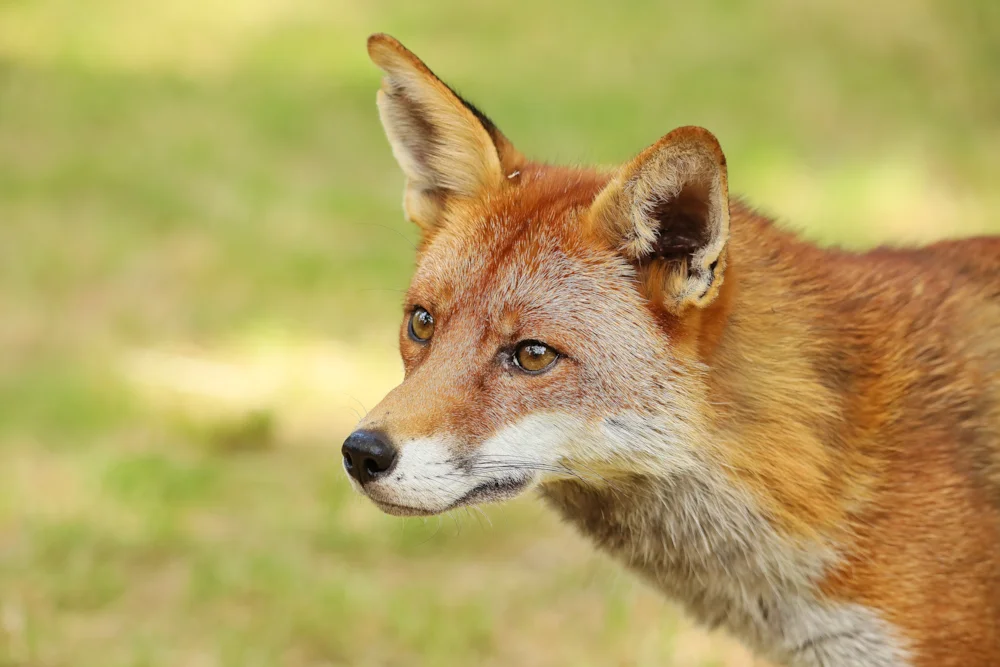Humans are a truly appalling species and responsible for so much accidental and outright intentional death of wildlife. In the case of islands some bureaucrat sees an island as some type of unspoilt paradise even though humans have messed with the island environments for centuries.
Farmers are concerned about a fox being found -why? The old myth (and it is factually proven to be an anti fox created myth) that foxes will kill and run off with lambs -sheep are introduced livestock and not native animals).
"A fox" and the fear mongering begins. We know that foxes exist on islands and have done so for centuries now -some introduced in the 1800s by hunts. This I detailed in The Red Paper 1: Canids.
An island and yet a fox is still killed by a car!
Rats and other rodents are prey for foxes and it is about time that this attitude of "We don't want it here -kill it!" was stopped. 6000 stoats killed. You do not get that many stoats unless there are ample prey animals and if stoats were not taking care of, say rodents, how would the rodents be dealt with -poisons again?
It is rather odd that a fox found in Shetland some years ago was said to have gotten there by either sneaking into a vehicle and crossing by ferry to the island or...being naively set free there. That means any others can be classed as an invasive species and humans can have fun and kill them.
We are wiping out foxes in the UK and wiping out badgers not to mention many other species and no one cares. The UK really does need to be shown on maps in a blood red colour because it has joined the United States and Australia as nations where wildlife is treated as something that can be killed as a scapegoat (for human created problems) or just for the fun of it by psychopaths or by others for gain.
Humans are a detestable species.
Fox appearance in Orkney sparks concern
A dead Red Fox has been found in Orkney, which has no known fox population, sparking concern for the archipelago's native wildlife.
The body of the young female fox was discovered near the Balfour Hospital in Kirkwall on Tuesday 9 September. Staff members at the hospital spotted the animal, which was later taken away by Orkney Islands Council and a post mortem examination was carried out at a local vet practice.
The council confirmed the matter had been reported to the police.

Red Fox is not native to Orkney and the appearance of one in Kirkwall has sparked concern for the islands' willdife (Clive Daelman).
Non-native foxes
Foxes have not existed in Orkney since the late Iron Age, with the only exception believed to be a failed attempt to introduce them in the 1930s.
A dead fox was found on the island in 2007, generating concern from farmers and environmentalists at the time. It was thought to have been brought over from the mainland.
Balfour Hay, one of the vets who carried out the post-mortem on the animal at Northvet veterinary surgery, said: "Based on the kind of injuries that we did see inside the body, we're fairly certain that it would have died from a road traffic accident or some other form of trauma.
"However, there was evidence on the post mortem that several of the fractures, particularly to the bones in its legs, certainly happened after it died. We don't know what would have caused those.
"There's already a bit of speculation that this animal may have been brought up from south. If that was the case, we just want to emphasise the potential risks to animal and public health from bringing animals up from outside of Orkney."
In recent years, The Orkney Native Wildlife Project has spent millions of pounds on its efforts to eradicate introduced Stoats. In only five years, the project has removed more than 6,000 of the mustelids from the archipelago.











